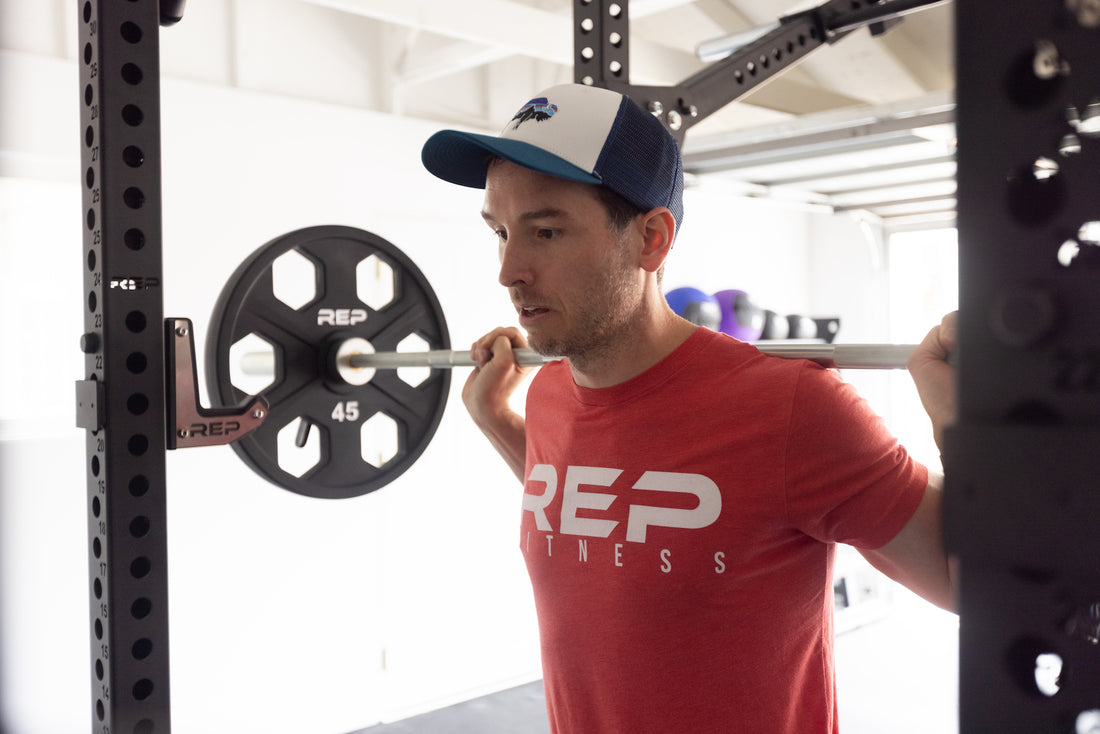
You did the math – a home gym can really be cheaper than joining a public gym – and now you’re ready to make it happen.
But before you start putting your power rack together, beware of these 13 common home gym mistakes:
1. Thinking short-term, not long-term. The upfront costs of building a home gym don’t have to be terrifying. But don’t just pick the cheapest squat rack out there and expect that to fulfill your needs. Think ahead when making your purchases; that’s where the real savings come from. Buy right the first time (look for equipment that you can build on over time, like a versatile power rack), and you can save money (and time) over the years.

2. Getting cheap equipment that will fall apart – or that you don’t really want. Make sure you buy from a reputable company. Lifting weights can be dangerous; you don’t want your squat rack crumbling before you.
3. Not planning for the space available. Before you spend a penny, know what space you’re working with. Measure it out and make sure your purchases will fit – and leave enough space for floor work and to grow into. This may require rearranging things in your home or garage.
4. Not prioritizing. Get what you need first. Start with the basics. Sure, the cable attachment handle may be on sale, but until you have a cable machine, it’s useless. Here’s a look at how to start a basic home gym. This is a great launching point.

5. Not thinking about versatility. Especially if space and finances are limited, be extra discerning with what you choose to buy. While specialty equipment is important, especially for niche fitness industries, most people will get more use out of, say, a mixed-use barbell over a specialty bar.
If you do want to get specialty equipment, look for options that are designed for multiple purposes, like the Oxylus yoke™ (a Strongman yoke, squat rack, sled, and deadlift carry all in one that also works with many different attachments).

An Open Trap Bar can be more versatile than a standard trap bar, especially one with multiple handle attachments. And a Cambered Swiss Bar has more uses than a standard Swiss bar.
6. Not picking a designated space and respecting it. Don’t make your home gym an afterthought. Protect the space and keep it sacred – and thereby useful. In other words, don’t hang clothes on your power rack to dry.
7. Not designing it intentionally. Have a vision before you start loading up your cart or putting whatever wherever. Every time you buy something, know where it will be stored, how you will use it, and how it will work with the equipment you already have. Impulse buys may give you a big dopamine fix, but make sure they contribute to your big muscle fix, too. Don’t buy stuff you won’t use.
8. Skipping gym flooring. Mats aren’t as fun to buy as a new kettlebell, we get it. But gym flooring protects your floors and equipment. It finishes off your space. And it’s super useful. You don’t want to be doing heavy squats on squishy carpet or sit-ups on your unfinished cement basement floor.
9. Getting too crazy. Stick to the tried and true and avoid flashes in the pan. You can always find another gadget that’s better suited for an infomercial than reality. The basics don’t make wild promises to “give you abs in six minutes a day,” but there’s a reason they’re timeless. They work.
10. Skimping on organization. It doesn’t matter how nice of equipment you buy if your home gym is a disaster and unusable. Organization is a part of a good workout. Read about the best storage system for your home or commercial gym here.

11. Not following your budget. Just like with any big purchase, set a budget – and stick to it. You might not be able to get everything you want right away, but learn the value of delayed gratification; that’s a key lesson with fitness and strength-training, anyway.
12. Forgetting the climate. If your home gym is too hot or cold, you’re not going to want to use it. Budget for a fan and space heater, at least. If you’re lifting in a damp area, like an unfinished basement or storage shed, you may want to get a dehumidifier to reduce mold and mildew. This goes for ventilation, too. Choose a space with windows or doors, if possible. You need air circulation. A ceiling fan can help.
13. Choosing style over functionality. Of course, you want your home gym to look sick. But if the blinking blue lights you install to create a nightclub vibe don’t allow you to easily see what you’re doing, they’re a hindrance. All style choices should contribute to the overall goal, not detract from it.

NEWSLETTER SIGNUP
Product launch information, promotions, blogs, and REP news.







